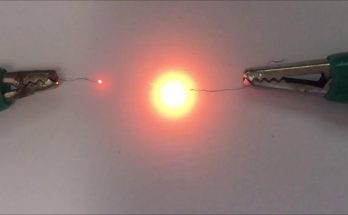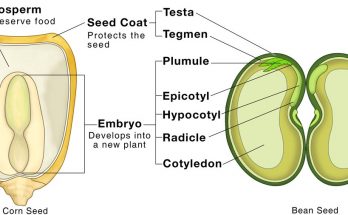The water cycle, also known as the hydrologic cycle, is a vital process on our planet. It describes how water moves from the Earth’s surface to the atmosphere and back again.
Table of Contents
What is the Water (Hydrologic) Cycle?
In simple terms, the water cycle involves the evaporation of water from surfaces like oceans, lakes, and rivers into the air, the formation of clouds through the condensation of this water vapour, and the return of water to the surface as precipitation (such as rain or snow). A part of this water seeps into the ground, a process called infiltration, and the rest flows over land, known as runoff. This continuous movement of water is essential for supporting life and ecosystems on Earth.
Water Cycle- 7 Key Stages and Their Roles
The water (Hydrologic) cycle is a vital natural process on Earth, comprising several stages, each with a unique role. Here’s an in-depth look at these stages-
Evaporation- Turning Water into Vapour

- What Happens- Evaporation occurs when water from sources like oceans, lakes, and rivers absorbs heat from the sun, turning into vapour and rising into the air. This process is crucial in moving water from the Earth’s surface to the atmosphere.
- See it in Action- To demonstrate evaporation, place a shallow container of water in a sunny spot. Over time, observe how the water level decreases, showing the transformation of water into vapour.
Also Check – Transpiration in Plants
Transpiration- Plants Contributing to the Cycle
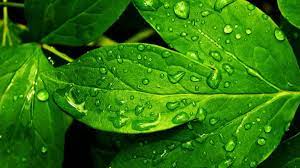
- What Happens- Transpiration is the process by which plants absorb water through their roots and release it as water vapour from their leaves. This is a significant part of the water cycle, contributing to the moisture in the atmosphere.
- Simple Experiment- Encase a leafy branch of a plant in a clear plastic bag and leave it in sunlight. You will notice moisture forming inside the bag, which is water vapour released through transpiration.
Also Check – Transpiration- Its Role in the Hydrologic Cycle
Condensation- Cloud Formation
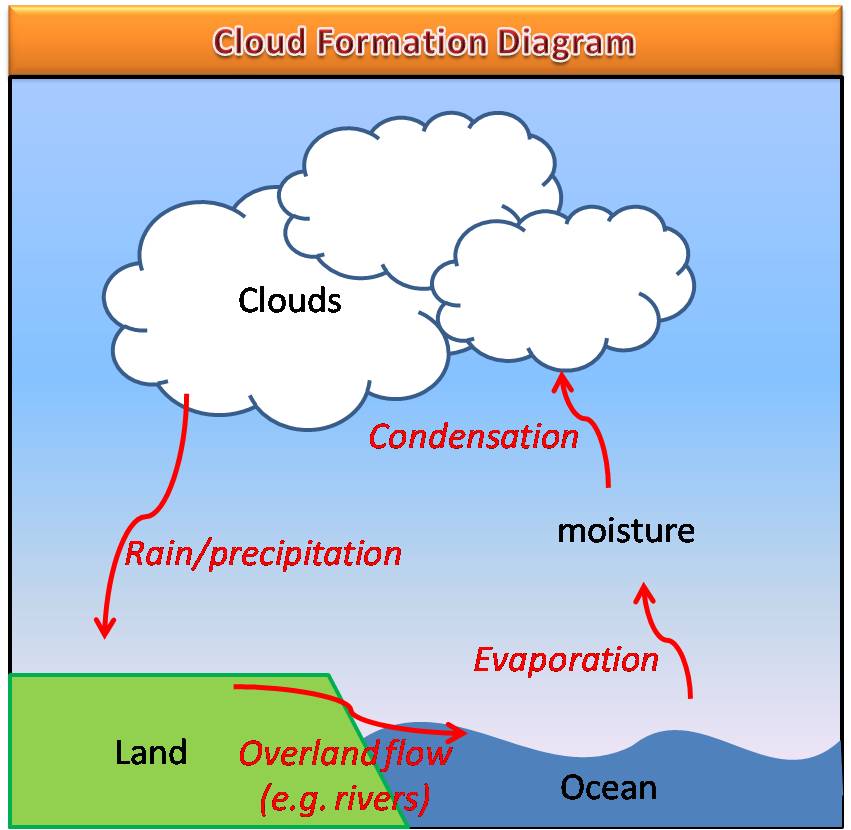
- What Happens– Condensation occurs when water vapour in the air cools and changes back into tiny liquid droplets, forming clouds. This process is essential for cloud formation and the subsequent stage of precipitation.
- Visual Aid- Boil water to create steam. Watch how the steam condenses into water droplets on a cooler surface placed above, mimicking how clouds are formed in the atmosphere.
Precipitation- Water’s Return Journey to Earth

- What Happens- In the water cycle, precipitation is the stage where water droplets in clouds become heavy and fall back to Earth. This can occur in various forms – as rain, snow, hail, or sleet. The type of precipitation depends on the atmospheric conditions. Rain usually happens when temperatures are higher, while snow forms in colder climates. Hail typically occurs during storms, and sleet is a mixture of rain and snow.
- Experiment- To simulate precipitation and understand its mechanics, you can perform a simple experiment using a jar, hot water, and ice cubes. First, pour hot water into a clear jar, filling it about one-third of the way. Let the water sit for a minute to warm the jar. Then, place a layer of ice cubes on top of the jar. The warm air inside the jar will rise, hit the cold ice, and condense into water droplets. These droplets represent rain, showing how precipitation forms in the atmosphere.
Sublimation – The Direct Shift from Solid to Gas

- What Happens: Sublimation is a process where ice or snow changes directly into water vapour without first becoming liquid water. This typically occurs in very cold environments, where the energy from the sun is strong enough to cause the ice to vaporise directly. This process is an essential part of the water cycle, especially in polar regions and high mountains.
- Visualising Sublimation: Seeing sublimation with ice is challenging, but its effects can be observed. For instance, if you hang a wet shirt outside on a freezing day, the ice in the shirt will eventually sublimate and the shirt will be dry. Another way to visualize this process is by using dry ice (solid carbon dioxide). When exposed to air, dry ice sublimates at -78.5 °C (-109.3°F), creating a foggy mixture of cold carbon dioxide gas and air.
Infiltration and Percolation- Water’s Underground Passage
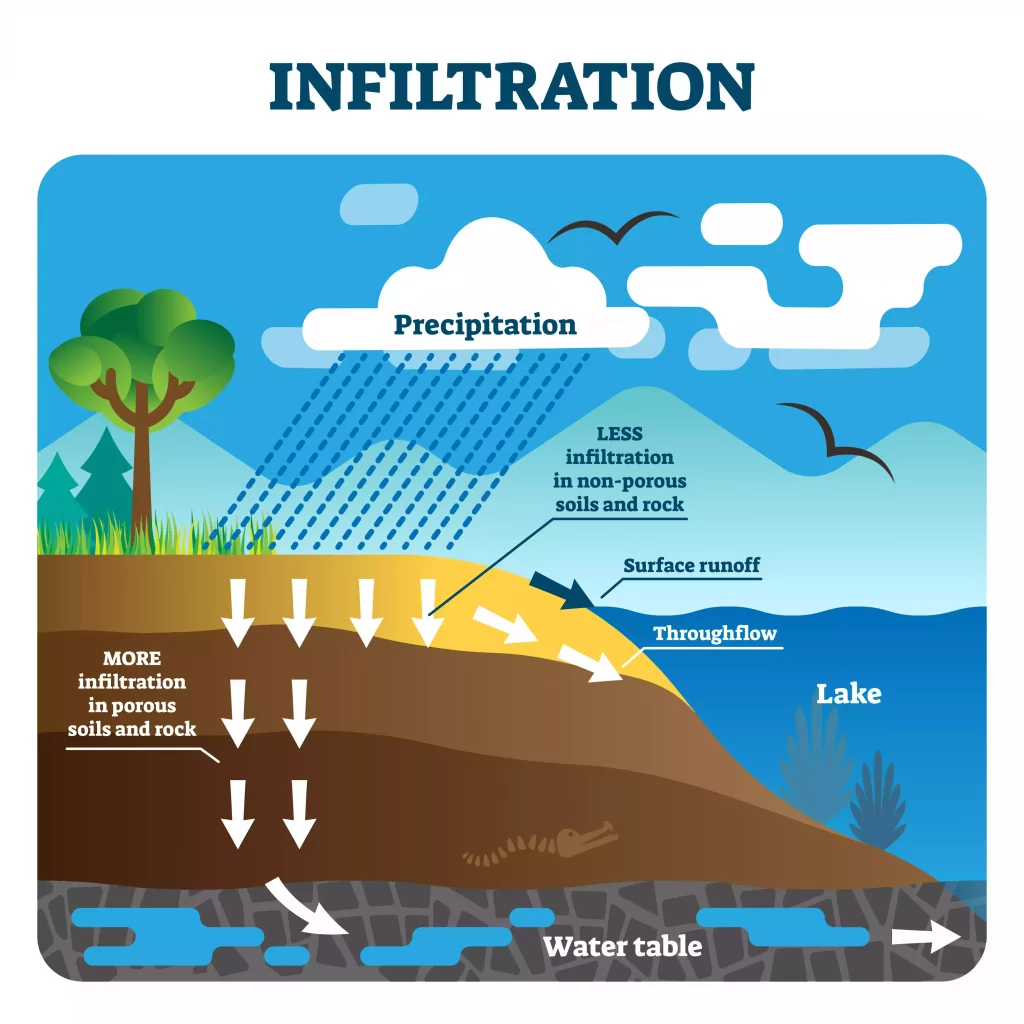
- What Happens in Infiltration: Infiltration is the process where water on the Earth’s surface enters the soil. This occurs when water from precipitation, such as rain or melting snow, is absorbed by the ground. The rate and amount of infiltration depend on several factors, including soil type, vegetation cover, and the intensity of the rainfall.
- Percolation: The Next Step: Following infiltration, percolation occurs. This is the movement of infiltrated water through the soil layers and into the groundwater. As the water moves downwards, driven by gravity, it passes through various soil and rock layers. This journey not only helps replenish underground aquifers, vital for freshwater supplies, but also filters the water, playing a part in the natural purification process.
- Visualising the Processes: To understand these processes, imagine rain falling on a garden. Initially, the water infiltrates the topsoil. Over time, this water percolates deeper, passing through different soil layers, eventually contributing to underground water reserves.
Runoff- Water’s Surface Journey

- What Happens- Runoff is the movement of water across the land’s surface, which occurs when the ground is saturated or impervious, and can’t absorb all the rainwater. Runoff is an important component of the water cycle as it channels water back into rivers, lakes, and oceans. However, it can also pick up pollutants from the land, affecting water quality.
- Visual Demonstration- Create a simple model to demonstrate runoff. Use soil or sand to form a slope in a tray. Pour water at the top of the slope and watch how it flows over the surface, simulating the process of runoff. This illustrates how water travels across different landscapes and eventually reaches larger bodies of water.
Also Check – Runoff in the Water Cycle- Explore the Effects of Hydrologic Cycle Runoff
The Sun’s Role in the Water Cycle
The sun plays a crucial role in the water cycle, particularly in driving the processes of evaporation and transpiration.

Solar Energy and Evaporation
Evaporation is the transformation of water from its liquid state to a gaseous state, known as water vapour. This process primarily occurs when the sun’s rays heat bodies of water like oceans, lakes, and rivers. The heat energy from the sun gives water molecules enough energy to break free from the surface and become vapour. This vapour then rises into the atmosphere, playing a pivotal role in the water cycle.
Sun and Transpiration
Transpiration is a similar process that happens in plants. Plants absorb water from the soil through their roots. When the sun warms the plants, this water moves up through the plants to the leaves, where it is released into the air as water vapour. This process contributes to the amount of moisture in the atmosphere, which is essential for cloud formation and, eventually, precipitation.
Also Check – 14 Important Differences between Transpiration and Evaporation
The Continuous Cycle
The water (Hydrologic) Cycle is a continuous, never-ending process. Unlike a story that has a beginning and an end, the water cycle has no starting point or final chapter. Instead, it’s a constant cycle of movement and change.
Water Always on the Move- In the water cycle, water is always in motion, transitioning between different states- liquid, vapour, and solid. When the sun heats water in oceans, lakes, and rivers, it evaporates and becomes vapour. Plants contribute to this movement by releasing water vapour in transpiration. This vapour then cools and condenses to form clouds, later falling as precipitation in various forms like rain or snow.
Changing States- Water’s journey doesn’t stop with precipitation. Once it reaches the ground, it either infiltrates into the soil, replenishing groundwater, or becomes runoff, flowing over the land. Eventually, much of this water finds its way back to the oceans, where it will once again evaporate, continuing the cycle.
Throughout this cycle, the total amount of water on Earth remains the same, but it constantly changes its location and state.
The Water Cycle’s Impact on Weather and Climate
The water cycle has a significant influence on weather patterns and climate change. It regulates the Earth’s temperature and helps in distributing heat around the globe.
- Influencing Weather Patterns- The water cycle is directly linked to weather conditions. For example, evaporation and transpiration add moisture to the air, which can lead to cloud formation and, eventually, precipitation. This process can influence various weather phenomena, such as rain, snow, and even storms. The amount and location of water vapour in the atmosphere can significantly affect local weather patterns.
- Effect on Climate Change- The water cycle also plays a critical role in climate change. Changes in the water cycle, such as altered precipitation patterns and evaporation rates, can be both a cause and effect of climate change. For instance, increased temperatures can lead to more evaporation, which, in turn, can lead to more intense and frequent rain storms or droughts in different regions.
Water Cycle and the Environment
The water cycle is vital for maintaining ecosystems. It supports all forms of life by distributing water, a crucial resource, across the planet.
- Sustaining Ecosystems– Water from the water cycle helps in maintaining various habitats, from forests and grasslands to rivers and oceans. It is essential for plants and animals, supporting processes like photosynthesis and hydration.
- Impact of Human Activities- Human activities can significantly affect the water cycle. Pollution, deforestation, and urbanisation can alter evaporation and precipitation patterns, affecting local and global climates. Overuse of groundwater and changing land surfaces can impact infiltration and runoff, disrupting the natural balance of ecosystems.
Interesting Facts About the Water Cycle
The water cycle is not just a crucial process for life on Earth but also filled with fascinating aspects. Here are some interesting facts about it-
- Vast Amount of Water in the Atmosphere- At any given time, the atmosphere contains approximately 37.5 million-billion gallons of water vapour. That’s enough to cover the entire surface of the Earth with 1 inch of water!
- Invisible Water Vapour- Most of the water in the atmosphere is in the form of invisible water vapour, not in the form of clouds or rain. This vapour is crucial for the formation of clouds and precipitation.
- Ancient Water- Some of the water on Earth is incredibly old. The water we use today has been a part of the water cycle for billions of years. This means we are essentially using the same water as the dinosaurs!
- Ice Caps and Glaciers- About 68.7% of the world’s freshwater is locked in ice caps and glaciers. Only a small percentage is available in rivers, lakes, and the atmosphere.
- Transpiration Power- A large oak tree can transpire 40,000 gallons of water into the atmosphere each year. That’s equivalent to filling a small swimming pool!
- Raindrop Formation- It can take a million cloud droplets to form a single raindrop. This process of droplets merging together in clouds is essential for precipitation.
- Underground Water- The vast majority of liquid fresh water in the world is underground in aquifers, not in rivers or lakes.
- Variable Rainfall- The amount of rainfall varies significantly across the world. While some places receive over 900 inches of rain a year, others get less than 1 inch.
Water Cycle- Questions Kids Ask.
Question- Why can’t we see water vapour in the air?
Answer- Water vapour is the gas form of water and is invisible. We can only see it when it cools and condenses into water droplets, which form clouds.
Question- Does the water cycle ever stop?
Answer- No, the water cycle is a continuous process and keeps going all the time. It’s like nature’s recycling system for water.
Question- Can we drink all the water in the water cycle?
Answer- No, most of the water in the water cycle is in the oceans and is too salty to drink. We can only drink freshwater, which is a much smaller part of the water cycle.
Question- How old is the water we drink?
Answer– The water we drink is very old! It has been part of the water cycle for billions of years and could have been dinosaur rain once!
Question- Why does rain sometimes fall in huge drops and other times in small droplets?
Answer- Raindrop size depends on how much moisture is in the cloud and how strong the updrafts in the cloud are. Bigger drops form when lots of small droplets join together.
Question- Do other planets have a water cycle?
Answer- Earth is the only known planet with a water cycle like ours, with liquid water, vapour, and ice. Some other planets and moons have cycles with different liquids or ices.
Question- Why does it rain more in some places than others?
Answer- Rainfall depends on many factors like geography, wind patterns, and proximity to the ocean. Places near the equator or large bodies of water tend to get more rain.
Question- How does snow become part of the water cycle?
Answer– Snow is a form of precipitation, just like rain. When it melts, it turns into water and joins rivers or soaks into the ground, continuing the water cycle.
Question- Is there the same amount of water on Earth now as when it was formed?
Answer- Yes, the amount of water on Earth has been roughly the same for billions of years. The water cycle just moves it around in different forms.
Question- Can we run out of water?
Answer- The total amount of water on Earth doesn’t change, but the freshwater we can use can become scarce due to pollution or overuse in some areas.

